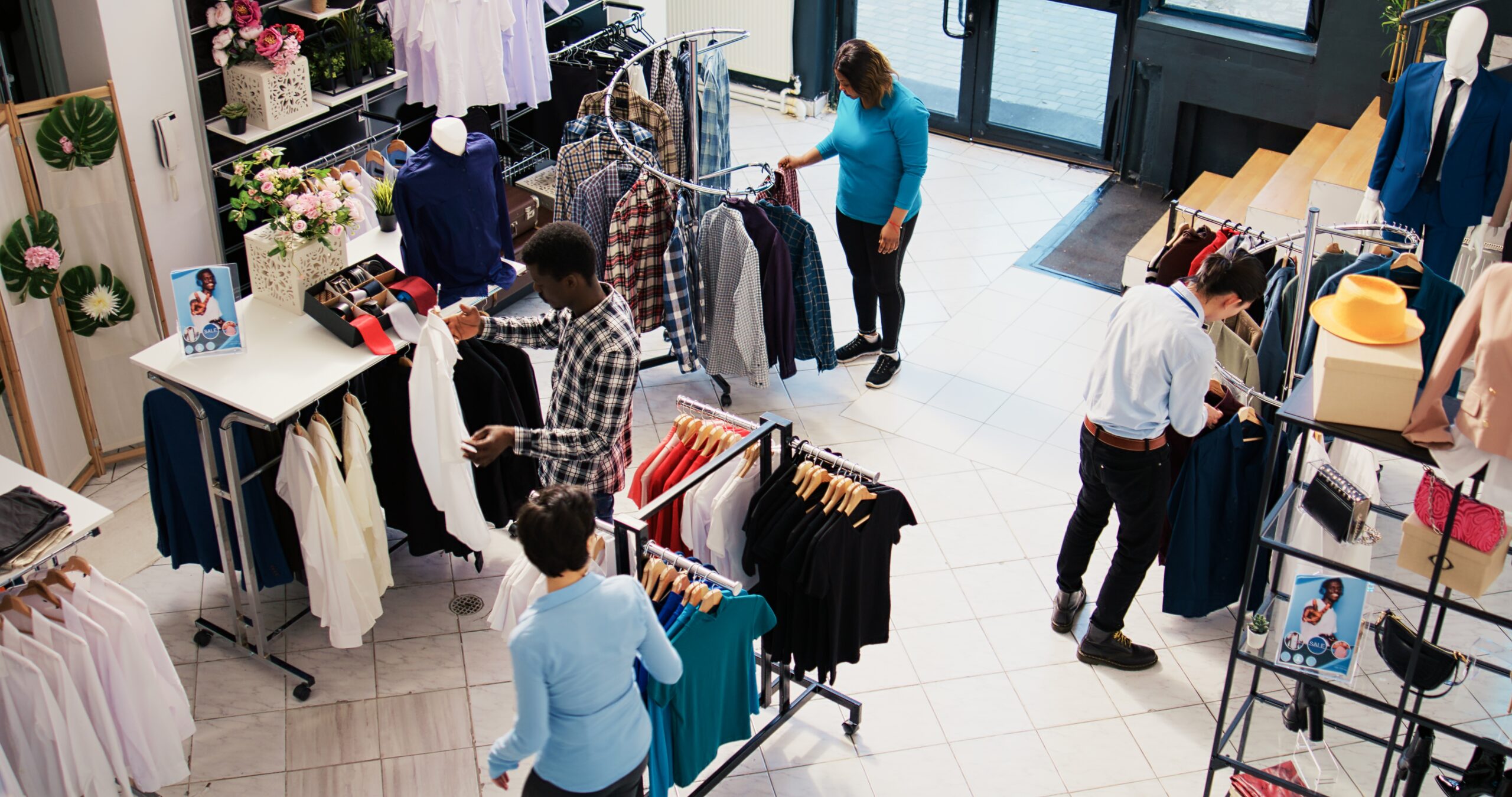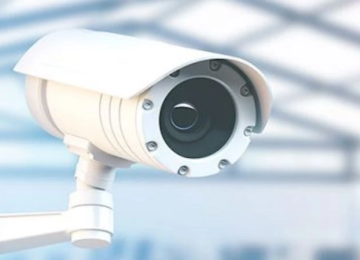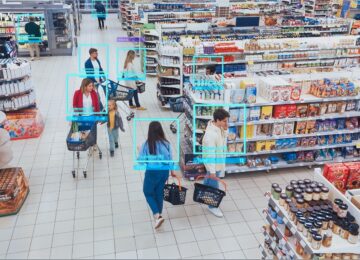Why Growing Retail Chains Are Switching to AI Video Analytics

Shoplifting doesn’t always show up as a single, dramatic event. It’s often quiet, repetitive, and easy to miss, until the numbers pile up. For multi-store retailers, these everyday thefts chip away at margins, create blind spots across locations, and stretch already-thin teams.
As retail chains grow, so do their challenges. More stores mean more staff, more stock, and unfortunately, more shrinkage.
Traditional security tools that worked in one or two stores often fall short when spread across twenty. Surveillance gaps grow wider. In-store teams get overwhelmed. And what used to be manageable theft quickly becomes a systemic issue.
That’s where AI video analytics surveillance software steps in.
This article unpacks how retail leaders are using intelligent video analytics to tackle theft at scale. We’ll examine what makes traditional methods challenging to scale, how AI helps bridge those gaps, and what the rollout process looks like in the real world.
Along the way, you’ll see why more retailers are treating AI not as a threat, but as a practical tool that helps their teams respond smarter, faster, and with less guesswork.
Why Traditional Loss Prevention Tools Don’t Scale and Where AI Fills the Gap
Growing chains face a familiar problem: the more stores you open, the more challenging it becomes to manage them all in the same way. Loss prevention is no different. Many chains rely heavily on CCTV in retail stores, but without centralized AI assistance, much of the footage goes unwatched or underused.
Most traditional tools weren’t designed to work across a growing retail chain.
For example:
- Security guards: Expensive and limited to one place at a time. Hiring more guards across multiple stores quickly drives up costs, and even then, coverage is partial at best.
- Passive CCTV: Most footage goes unwatched. It helps after an incident, but doesn’t prevent anything in the moment.
- EAS gates (Electronic Article Surveillance): These trigger alarms only after a theft has occurred. Additionally, experienced thieves often bypass them by using insulated bags or quickly removing tags.
The issue is bigger than just the tools. It’s about consistency. In one store, the cameras may be placed well. In another, they’re blind in key aisles.
One manager trains staff on how to spot theft, while another doesn’t. And across all of it, there’s little centralized visibility for regional managers or loss prevention teams to make informed decisions.
The result? Inconsistencies pile up. Theft creeps in. Losses grow.
According to NRF’s 2023 National Retail Security Survey, U.S. retailers lost approximately $112.1 billion in 2022 due to inventory shrink (about 1.6% of total retail sales) with external theft, including shoplifting, accounting for 36% of those losses. More alarmingly, NRF’s 2024 Impact of Retail Theft & Violence report shows that from 2019 to 2023, shoplifting resulted in a 90% increase in dollar losses and a 93% uptick in incident frequency. These trends highlight the growing risk posed by theft.
What AI-Powered Video Analytics Software Delivers for Retailers
Unlike traditional systems, AI video analytics doesn’t just record, it analyzes. Instead of relying on a person to monitor hours of footage or catch suspicious behavior in real time, AI tools scan for patterns in how people move. These advanced video analytics solutions are designed to enhance security while streamlining security operations.
This isn’t facial recognition. Instead, it’s gesture recognition, trained to spot behaviors like concealment, shelf sweeping, or product hiding in bags. These are patterns associated with repeat theft.
And that’s important because most theft isn’t random.
Our data shows that over 60% of detected shoplifting is committed by repeat offenders. It’s the same individuals coming back, using the same tactics.
With AI, retailers get:
- Real-time alerts: Staff receive a short video the moment suspicious behavior is detected, not hours later.
- Better allocation of team time: No one has to sit and monitor screens. Staff can serve customers and only step in when necessary.
- Pattern detection: AI helps identify trends across locations, including peak theft times, repeat behaviors, and high-risk zones or aisles. This insight helps teams fine-tune their loss prevention strategies with data-backed precision.
- Risk mitigation: Identifying threats early helps reduce loss.
- Minimizing false alarms: Alerts are based on behavior, not random movement, which boosts situational awareness and improves over time as data is collected.
And perhaps most critically, AI empowers stores to act before products leave the building. That’s the difference between review and proactive prevention.
Why Retailers Are Moving to AI Video Analytics That Works With Existing Systems
One of the biggest hurdles in scaling new technology is complexity. New installations. Expensive equipment. Downtime. That’s not the case with Veesion.
Veesion’s video analytics platform seamlessly connects to your existing CCTV cameras, no need to replace hardware or overhaul your setup. The AI can run on a compact server installed on-site or through a serverless integration, depending on your needs. Installation takes as little as 30 minutes.
It doesn’t just cut costs. It removes friction. No retraining your team. No waiting weeks to go live.
Installation is remote-ready, too. That means chains can start testing in one or two stores without slowing operations. If it works, scaling up is straightforward.
The impact can be big. At Amsterdam Schiphol Airport, one Veesion-equipped store recovered over $177,000 in just six months from detected thefts. Other clients report reductions of up to 60% in shrinkage.
All of this happens without replacing staff. Instead, teams get more support, not more stress. They can act faster, respond smarter, and feel more confident in their day-to-day roles.
It’s a seamless integration of AI video surveillance into your existing security systems and surveillance infrastructure.
Plus, it enhances your current video surveillance cameras to provide real-time visibility and automated alerts.
How Store Chains Are Rolling This Out
Rolling out AI video analytics doesn’t have to be a major project.
In fact, most chains start small:
- Begin with a pilot: Install Veesion in 1–3 stores to validate performance. Use alerts and data to assess trends.
- Identify high-risk areas: Based on AI alerts, determine which aisles, hours, or locations are contributing the most to losses.
- Train teams with real examples: Staff don’t need full tech training. They learn from short video clips and confirm whether theft occurred. It’s intuitive and fast.
- Scale based on results: Once the ROI is clear, add more locations. Because the hardware is plug-and-play, expansion is smooth.
Throughout, teams stay in control. They can fine-tune which gestures are monitored, adjust detection sensitivity, and enable silence mode when needed. A dedicated Customer Success Manager is there to support every step.
For retail teams stretched thin across locations, this kind of setup changes the game. It improves operational efficiency, supports staff, and boosts overall video security without adding layers of complexity.
Smart Tech That Grows With You
As your retail chain grows, so do your challenges. Theft doesn’t just cost you products. It steals time, visibility, and confidence. Traditional security tools can’t keep up.
AI video analytics gives you a way to scale smarter. Not by hiring more staff or overhauling your entire tech stack, but by adding intelligent support to the systems you already rely on.
With gesture recognition and real-time alerts, your team gains faster insight, improved response times, and fewer blind spots. You can identify repeat patterns, protect high-risk locations, and provide staff with more peace of mind.
And the best part? You don’t need a complete overhaul to get started, just a camera system, an internet connection, and a few stores to test. AI technology and machine learning are finally accessible to retail stores of all sizes.
Curious what it could look like in your stores?
Book a demo with our team and see the results for yourself.
AI Video Analytics FAQ: False Alarms, Existing Systems, and More
With all the benefits, retailers often have practical questions before adopting any new technology. How hard is it to install? Will it trigger too many false alarms? Can it really work with the systems they already have? The answers are simpler than you might think.
Let’s clear up the most common questions about AI video analytics software and what to expect when bringing it into your stores.
Is Integration Difficult?
Not at all. The server connects to your current CCTV system in about 30 minutes. No new cameras needed. Installation is done remotely. Whether you’re working with older setups or exploring new smart cameras, Veesion’s platform adapts without requiring major upgrades.
How Soon Can Results Be Seen?
Many stores see results within days. Real-time alerts allow staff to intervene immediately. Over the following weeks, you can identify patterns, qualify alerts to optimize your system, improve response times, and clearly measure ROI.
Does This Replace Staff?
No. Veesion supports your team by helping them act smarter and faster. It reduces the need to manually monitor cameras throughout the day and frees up time for other store tasks.
How Do Video Surveillance Systems Help With Theft Detection and Response?
They create visibility into daily operations. With AI-powered systems, these AI video surveillance solutions go further by spotting behaviors and helping teams respond before losses occur. The result: fewer security incidents, improved object detection, and quicker intervention.
What Are the Key Features of Veesion’s Video Analytics Platform?
Gesture detection, customizable alerts, mobile access, quick installation, and seamless integration with existing security cameras are just a few of the features. Together, these features enhance security and offer key benefits without overloading store staff.
Can AI Understand Customer Behavior or Just Threats?
AI is trained on behavior, both suspicious and normal. This includes understanding movement patterns and behaviors that may indicate security threats. That context helps improve situational awareness and lowers the chance of missing serious issues.
What Role Does Artificial Intelligence Play in Reducing Theft Across Retail Stores?
AI automates much of the surveillance process, enabling machine learning models to identify and learn from suspicious activity. This allows your security operations to become more intelligent over time and helps prevent recurring losses.
The most popular
Related news
Discover what Veesion can do for you. Do you have one or more stores?
Our team will contact you within 48 hours





